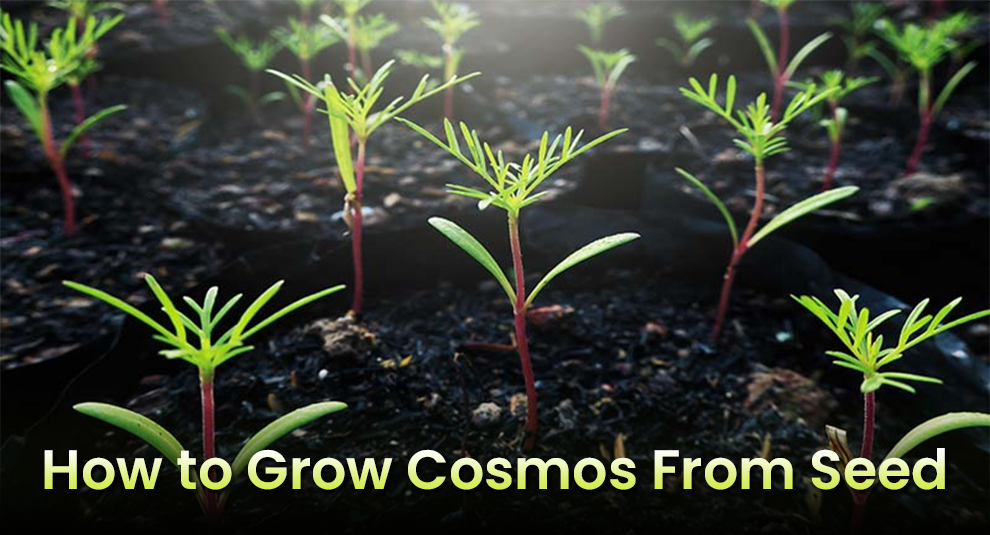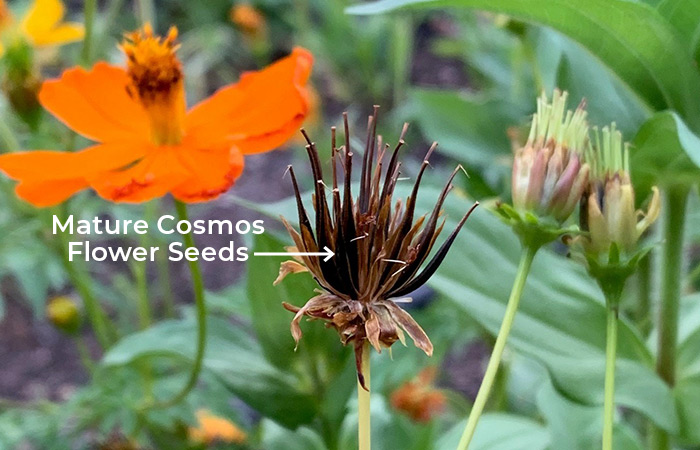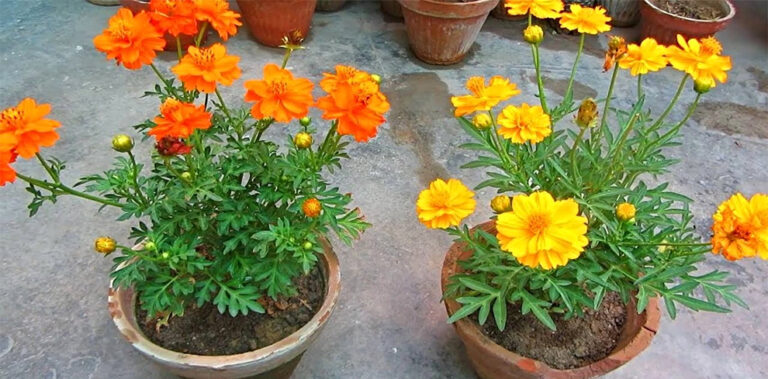Understanding the Ideal Climate for Cosmos Seed Germination
Cosmos seeds require specific conditions to germinate and grow into healthy plants. Temperature, moisture, and sunlight are crucial factors that affect the growth and development of cosmos plants. When considering when to plant cosmos seeds outside, it’s essential to understand the ideal climate for germination.
The optimal temperature for cosmos seed germination is between 65°F (18°C) and 75°F (24°C). Soil temperature is also critical, as cosmos seeds germinate best in soil that has reached a temperature of at least 60°F (15°C). In regions with cooler temperatures, it’s recommended to start cosmos seeds indoors 4-6 weeks before the last frost date and then transplant them outside when the weather warms up.
Moisture is another vital factor in cosmos seed germination. The soil should be consistently moist during the germination period, but not waterlogged. Cosmos seeds can be susceptible to rot if the soil is too wet. Adequate sunlight is also necessary for cosmos seedlings to grow and develop. Choose a location that receives full sun to partial shade, depending on the specific cosmos variety.
When to plant cosmos seeds outside also depends on the region’s climate and last frost date. In areas with mild winters, cosmos seeds can be directly sown in the garden in early spring or late summer. In regions with harsh winters, it’s best to start cosmos seeds indoors and then transplant them outside when the weather warms up. By understanding the ideal climate for cosmos seed germination, gardeners can ensure optimal growth and development of their cosmos plants.
How to Prepare Your Garden for Cosmos Seed Planting
Before planting cosmos seeds outside, it’s essential to prepare the garden bed to ensure optimal growth and development. The first step is to choose a location that receives full sun to partial shade, depending on the specific cosmos variety. Cosmos plants prefer well-draining soil, so it’s crucial to select a spot with good drainage.
The next step is to prepare the soil. Cosmos seeds prefer a slightly acidic to neutral soil pH, ranging from 6.0 to 7.0. Test the soil pH and amend it if necessary. Add organic matter such as compost or well-rotted manure to improve soil fertility and drainage. Till the soil to a depth of 12-18 inches to loosen and aerate it.
Remove any debris, weeds, or rocks from the garden bed. Cosmos seeds can be sensitive to competition from weeds, so it’s essential to create a weed-free environment. Use a pre-emergent herbicide or mulch to prevent weeds from germinating.
Finally, create a smooth and even surface for planting. Rake the soil to create a fine tilth, and then firm the soil gently to create a stable surface. This will help prevent the seeds from washing away and ensure good contact between the seeds and the soil.
By following these steps, gardeners can create an ideal environment for cosmos seed germination and growth. When to plant cosmos seeds outside will depend on the specific climate and region, but with a well-prepared garden bed, gardeners can ensure optimal growth and development of their cosmos plants.
The Best Time to Plant Cosmos Seeds in Different Regions
When to plant cosmos seeds outside depends on the specific region and climate. In general, cosmos seeds can be planted in the spring or fall, when the weather is cooler and there is ample moisture. However, the exact timing varies depending on the region and climate zone.
In temperate climates, such as in the northern United States and Europe, the best time to plant cosmos seeds outside is in late spring to early summer, when the soil has warmed up and the risk of frost has passed. In areas with mild winters, such as in California and the southern United States, cosmos seeds can be planted in the fall, about 8 to 10 weeks before the first frost.
In tropical and subtropical regions, such as in Hawaii and the Caribbean, cosmos seeds can be planted year-round, as long as the soil is moist and the temperature is above 60°F (15°C). In areas with hot and dry summers, such as in the southwestern United States, it’s best to plant cosmos seeds in the fall, when the weather cools down and there is more moisture.
In regions with harsh winters, such as in Canada and the northern United States, it’s best to start cosmos seeds indoors 4 to 6 weeks before the last frost date and then transplant them outside when the weather warms up. This will give the seedlings a head start on the growing season and ensure they have enough time to mature before the first frost.
When planting cosmos seeds outside, it’s essential to check the specific weather forecast and soil temperature for your region. This will help you determine the best time to plant and ensure optimal growth and development of your cosmos plants.
What to Expect After Planting Cosmos Seeds Outdoors
After planting cosmos seeds outside, it’s essential to understand what to expect during the germination and seedling growth stages. Cosmos seeds typically germinate within 7-10 days after planting, depending on the soil temperature and moisture levels.
During the germination process, the seeds will begin to sprout, and a small white root will emerge, followed by a green stem and leaves. Keep the soil consistently moist during this stage, but not waterlogged, as this can lead to rot and poor germination.
Once the seedlings have emerged, they will begin to grow rapidly, producing a rosette of leaves and a central stem. At this stage, it’s essential to provide adequate sunlight, water, and nutrients to promote healthy growth. Cosmos seedlings prefer full sun to partial shade and well-draining soil.
However, young cosmos seedlings can be susceptible to pests and diseases, such as aphids, whiteflies, and powdery mildew. Keep an eye out for these potential challenges and take action promptly if you notice any issues. Regularly inspect the seedlings for signs of stress or disease, and take steps to prevent infestations.
As the seedlings grow, they will begin to produce buds and eventually bloom. Cosmos flowers come in a variety of colors, including pink, white, red, and purple, and can bloom for several weeks. To encourage blooming, provide adequate sunlight, water, and nutrients, and deadhead spent flowers regularly.
By understanding what to expect after planting cosmos seeds outside, gardeners can provide the best possible care for their seedlings and enjoy a bountiful harvest of beautiful cosmos flowers.
Common Mistakes to Avoid When Planting Cosmos Seeds Outside
When planting cosmos seeds outside, there are several common mistakes that gardeners can make, which can lead to poor germination, weak seedlings, and reduced blooming. One of the most common mistakes is planting cosmos seeds too early or too late in the season.
Planting cosmos seeds too early can lead to poor germination, as the soil may be too cold or too wet. On the other hand, planting cosmos seeds too late can result in weak seedlings that may not have enough time to mature before the first frost.
Another common mistake is not providing adequate sunlight and water for cosmos seedlings. Cosmos plants require full sun to partial shade and consistent moisture to grow and thrive. Failure to provide these conditions can lead to weak and spindly seedlings.
Not preparing the soil properly is also a common mistake. Cosmos seeds prefer well-draining soil that is rich in organic matter. Failure to prepare the soil properly can lead to poor germination and weak seedlings.
Finally, not providing support for cosmos plants is another common mistake. Cosmos plants can grow quite tall, and may require staking or other support to prevent them from toppling over in the wind.
By avoiding these common mistakes, gardeners can ensure that their cosmos seeds germinate and grow into healthy, thriving plants. When to plant cosmos seeds outside is just the first step in growing these beautiful flowers. Proper care and maintenance are also essential for optimal growth and blooming.
How to Care for Cosmos Plants After Germination
After germination, cosmos plants require regular care to ensure healthy growth and blooming. One of the most important things to consider is watering. Cosmos plants prefer well-draining soil and should be watered regularly, but not excessively. Aim to provide about 1-2 inches of water per week, either through rainfall or irrigation.
Fertilizing is also crucial for cosmos plant growth. Use a balanced fertilizer that is high in phosphorus to promote blooming. Apply the fertilizer once a month, following the manufacturer’s instructions.
Pruning is another important aspect of cosmos plant care. Remove any dead or damaged leaves or stems to promote healthy growth and prevent disease. Also, consider staking the plants to prevent them from toppling over in the wind.
Additionally, cosmos plants benefit from regular deadheading. Remove spent blooms to encourage the plant to produce more flowers. This will also help to maintain the plant’s appearance and promote healthy growth.
Regular maintenance is key to keeping cosmos plants healthy and thriving. By providing the right care and attention, gardeners can enjoy a bountiful harvest of beautiful cosmos flowers. When to plant cosmos seeds outside is just the first step in growing these stunning flowers. Proper care and maintenance are also essential for optimal growth and blooming.
Tips for Encouraging Cosmos Seedlings to Bloom
Once cosmos seedlings have germinated and are growing well, it’s time to encourage them to bloom. One of the most important things to consider is providing adequate sunlight. Cosmos plants require full sun to partial shade to produce plenty of blooms.
Watering is also crucial for encouraging cosmos seedlings to bloom. Make sure to provide about 1-2 inches of water per week, either through rainfall or irrigation. Avoid overwatering, as this can lead to weak and spindly growth.
Fertilizing is another key factor in encouraging cosmos seedlings to bloom. Use a balanced fertilizer that is high in phosphorus to promote blooming. Apply the fertilizer once a month, following the manufacturer’s instructions.
Deadheading is also an important technique for encouraging cosmos seedlings to bloom. Remove spent blooms to encourage the plant to produce more flowers. This will also help to maintain the plant’s appearance and promote healthy growth.
Pruning is another technique that can help to encourage cosmos seedlings to bloom. Remove any dead or damaged leaves or stems to promote healthy growth and prevent disease. Also, consider staking the plants to prevent them from toppling over in the wind.
By following these tips, gardeners can encourage their cosmos seedlings to bloom and enjoy a bountiful harvest of beautiful cosmos flowers. When to plant cosmos seeds outside is just the first step in growing these stunning flowers. Proper care and maintenance are also essential for optimal growth and blooming.
Enjoying the Fruits of Your Labor: Cosmos Plant Maintenance
After planting cosmos seeds outside and providing the necessary care, gardeners can enjoy the fruits of their labor by maintaining their cosmos plants. Regular maintenance is crucial to keep cosmos plants healthy and thriving.
One of the most important aspects of cosmos plant maintenance is regular watering. Cosmos plants prefer well-draining soil and should be watered regularly, but not excessively. Aim to provide about 1-2 inches of water per week, either through rainfall or irrigation.
Fertilizing is also essential for cosmos plant maintenance. Use a balanced fertilizer that is high in phosphorus to promote blooming. Apply the fertilizer once a month, following the manufacturer’s instructions.
Pruning is another important aspect of cosmos plant maintenance. Remove any dead or damaged leaves or stems to promote healthy growth and prevent disease. Also, consider staking the plants to prevent them from toppling over in the wind.
Deadheading is also an important technique for cosmos plant maintenance. Remove spent blooms to encourage the plant to produce more flowers. This will also help to maintain the plant’s appearance and promote healthy growth.
By following these tips, gardeners can enjoy a thriving cosmos plant in full bloom. When to plant cosmos seeds outside is just the first step in growing these stunning flowers. Proper care and maintenance are also essential for optimal growth and blooming.
With proper maintenance, cosmos plants can provide a beautiful display of color and texture in the garden. They can also attract pollinators and other beneficial insects, adding to the overall health and biodiversity of the garden.





